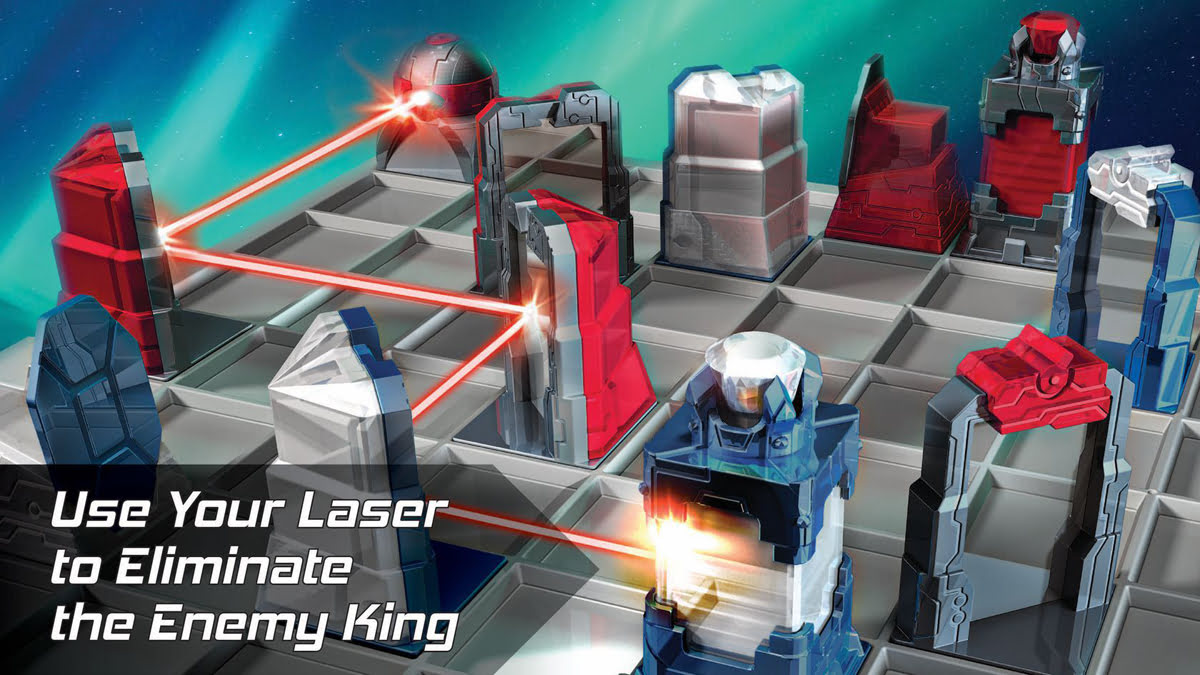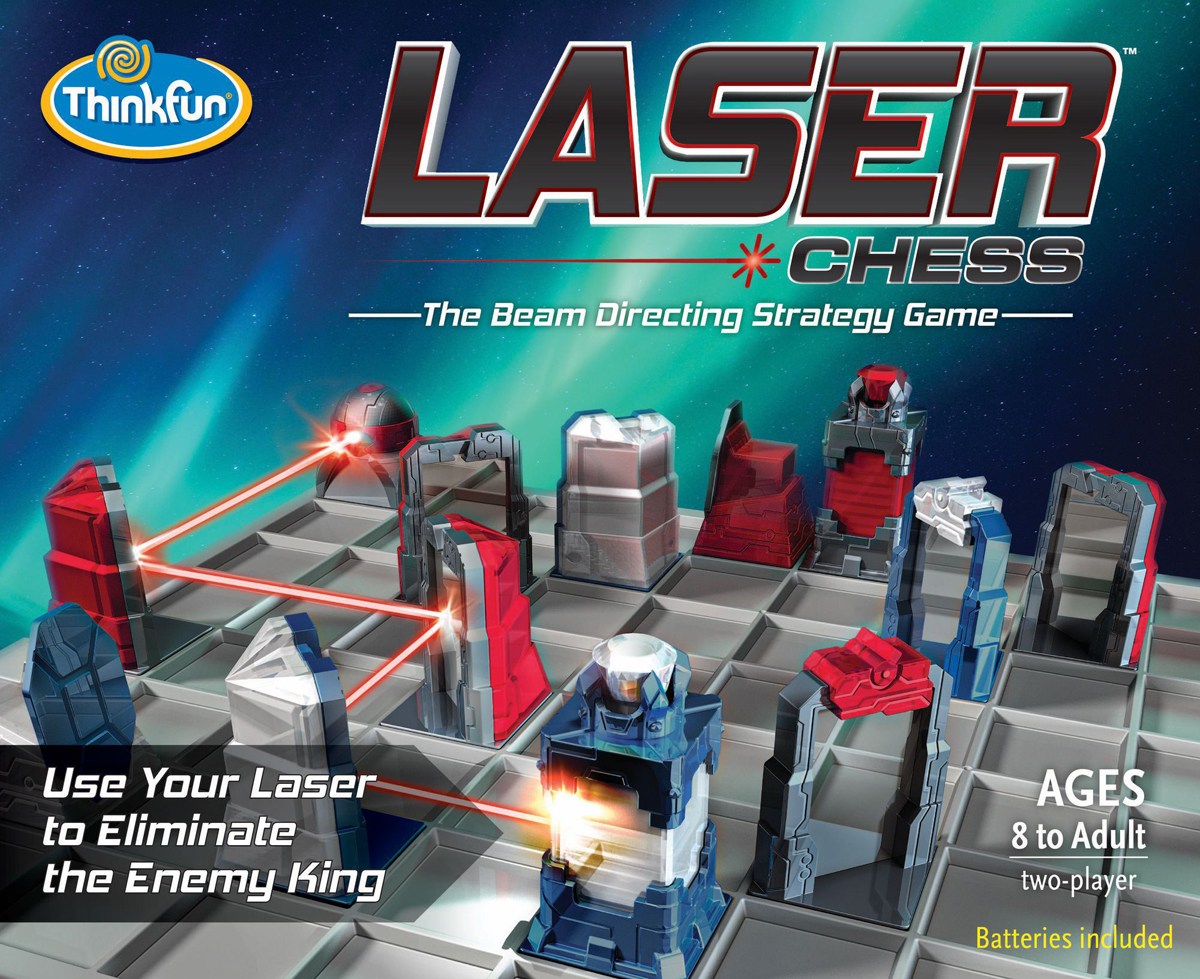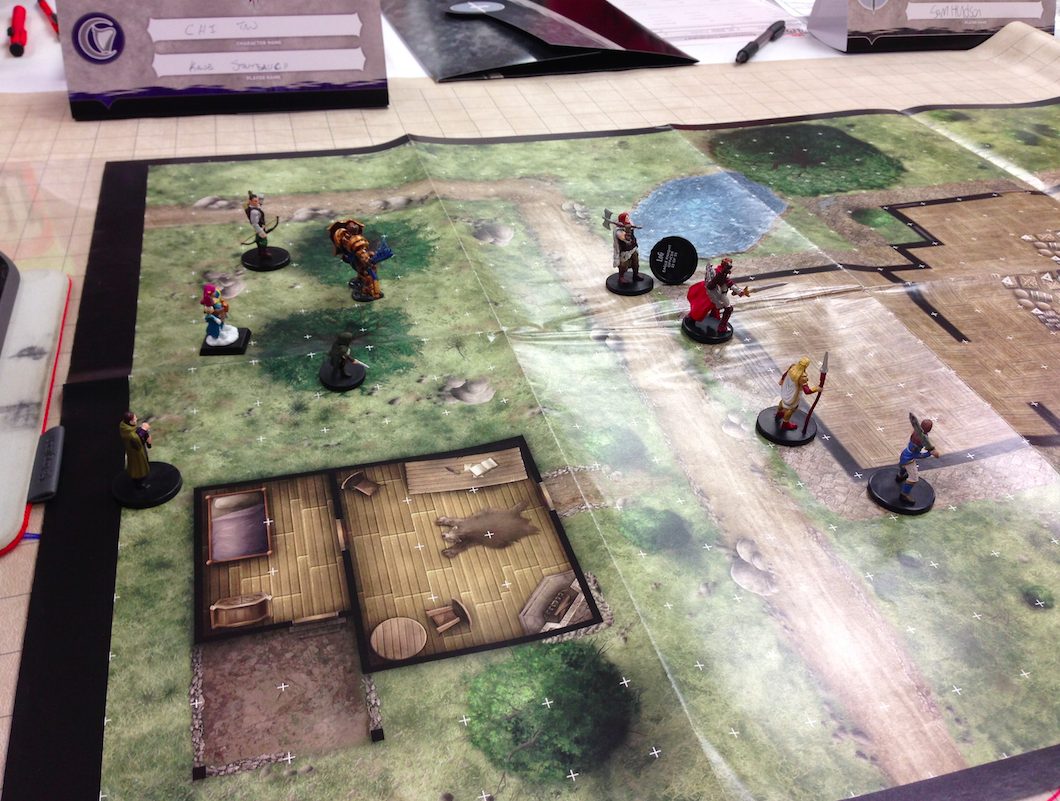Set up your mirrors and direct your laser past your enemy’s defenses to eliminate their king—but be sure not to leave yourself open to attack!
What Is Laser Chess?
Laser Chess is a Thinkfun game for 2 players, ages 8 and up, and takes about half an hour to play. It’s actually new version of an older game, Khet 2.0, which is mechanically the same but without the Egyptian theme. Thinkfun’s version retails for $39.99 and is available from Amazon and at various retailers.
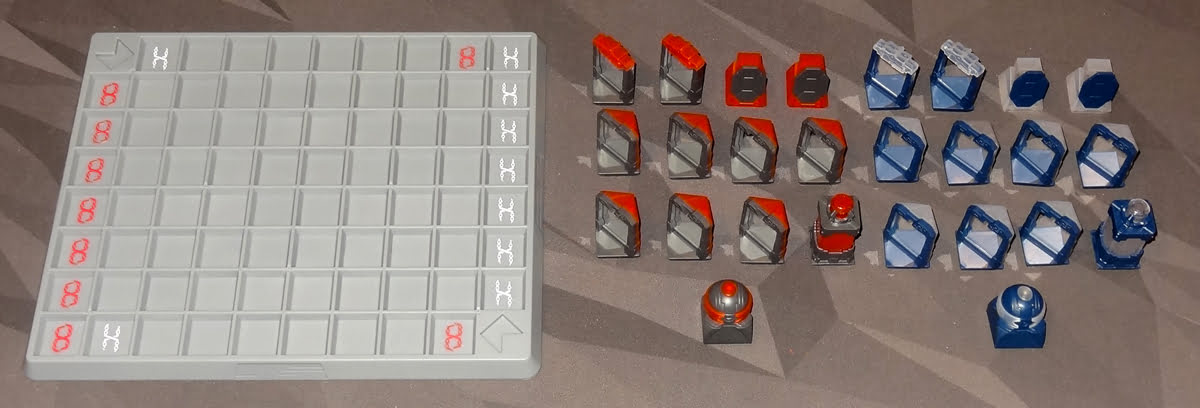
Laser Chess Components
Here’s what comes in the box:
- Game Grid
- 26 Pieces:
- 2 Kings
- 4 Switches
- 4 Defenders
- 14 Deflectors
- 2 Lasers
The game grid itself is about 10″x12″, and it’s a grid of recessed wells. Two opposite corners have a special recessed shape that holds the lasers, and there are a few raised, printed markings in red and white in some of the spaces.

Half of the pieces are red and grey, and half are blue and white. They’re mostly plastic, with glass mirrors set at 45° angles to the grid. Many of the pieces have translucent plastic portions, so that they light up and glow when hit by the lasers: for instance, the “crown” on the top of the kings is translucent, so that if a laser hits the side of the king, the crown also glows.
The defender has an opaque “shield” on one face but is vulnerable on the other three sides. The switch has mirrors on both sides, so it can never be hit. The deflector has a mirror and two vulnerable sides, and the king is vulnerable on all four sides.
The lasers themselves are encased in small orbs that fit onto the corners of the game grid, and can be rotated to fire along either the long or short edge of the board. (It should go without saying, but don’t fire these at anyone’s eyes.) The actual laser beam can’t be seen (as on the cover)—you just see the spot where it hits.

There’s a plastic box insert that holds all of the pieces. The one note is that the switches have a little asymmetric “switch” decoration at the top, and the piece won’t fit into the insert properly if you have it turned the wrong way.
How to Play Laser Chess
You can download a copy of the rulebook here.
The Goal
The goal of the game is to zap your opponent’s king with a laser.
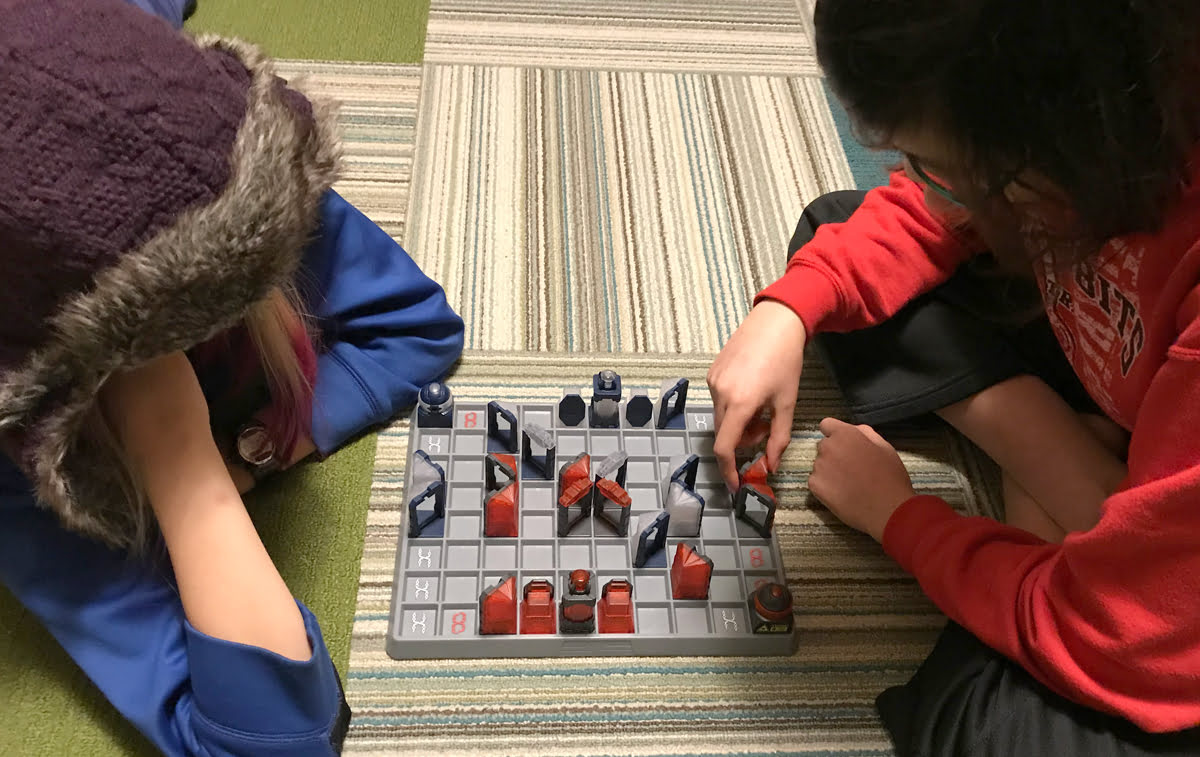
Setup
Each player takes all the pieces of their color. There are five starting setup options shown in the rulebook, but you can also come up with your own. The primary rule seems to be, like chess, that you preserve symmetry in the setup.
Gameplay
Players take turns—on each turn, you must move a piece, and then fire your laser.
You must take one of these three options for movement:
- Move any of your pieces one space in any direction, orthogonally or diagonally (preserving orientation)
- Rotate any of your pieces 90° in either direction (while staying in the same space)
- Rotate your laser 90°.
The switch piece, which is mirrored on both sides, has a special move: it may swap positions with an adjacent deflector or defender of either color—neither piece rotates during the swap.
The white helix spaces on the grid may only be occupied by the blue/white pieces, and the red helix spaces may only be occupied by red/grey pieces.
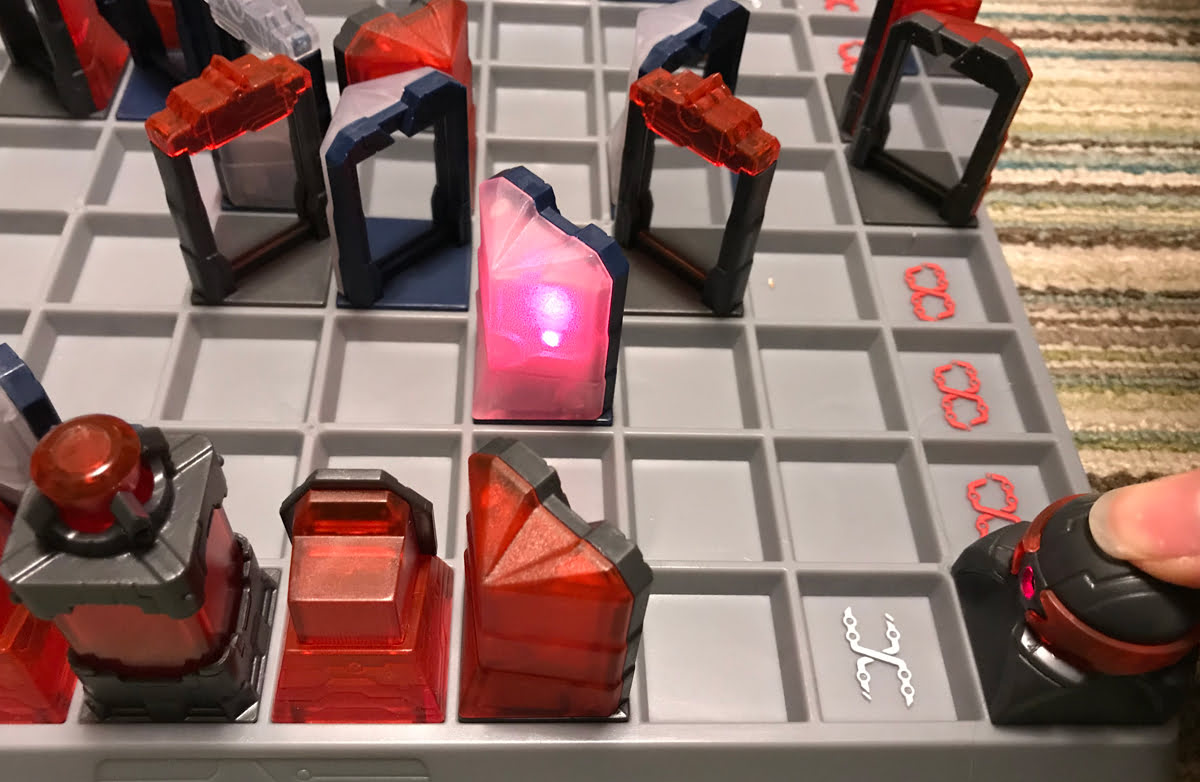
If the translucent portion of a piece is hit by a laser (regardless of whose laser hit it), that piece is removed from the board. Defender pieces have one opaque face; a laser hitting this face does not remove the piece.
Game End
If your king is ever hit by a laser—even your own—you lose.
Why You Should Play Laser Chess
The short answer: it’s chess … with lasers!
That right there is probably enough information for you to know whether you’ll enjoy it or not. If you like abstract strategy games and you like laser-based puzzles, Laser Chess combines the two quite well. If you don’t like abstract strategy, the novelty of the lasers and mirrors might be enough to draw you in, but it certainly helps if you also like to play chess-style games.
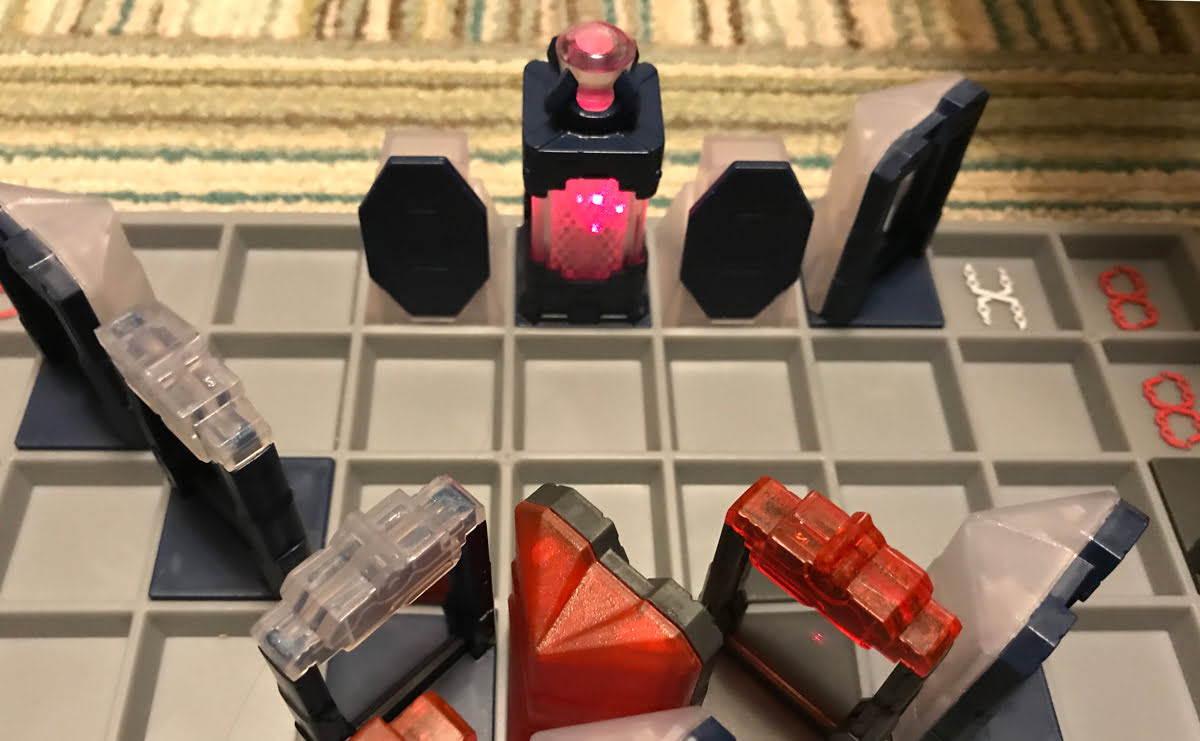
As I mentioned before, Laser Chess isn’t totally new, though this is a new incarnation. The original Khet has been around since 2005, and Laser Chess is based on the slightly different version Khet 2.0 from 2011. Khet had an Egyptian theme, with pyramids and Anubis pieces and Sphinx-shaped lasers. The rules appear to be identical to Khet 2.0.
I’ve always liked laser-based puzzles, figuring out how to rotate mirrors to direct a beam of light to a particular target. For the most part, though, my experience with those has been largely simulated in digital games. Thinkfun’s Laser Maze is an example of a physical laser game, and my daughters and I really enjoyed figuring out its puzzles.
Laser Chess takes those puzzles and turns it into a head-to-head competition. Can you figure out how to bounce the beam to take out your opponent’s pieces, without opening up opportunities for them to hit you back? It’s harder than it looks. You might move a switch into position for a hit, not realizing that it sets up a shot to your own piece on the other side. And, yes, we’ve had some games that ended because a player shot their own king.

As you move pieces around, you’re not allowed to “check” where the laser is currently hitting. There are no test shots, just one real shot after you’re done moving your piece. It definitely pays off to trace both your own path and your opponent’s before you finalize your move.
My daughters had fun with it, but they’re both fairly inexperienced when it comes to chess, and so they often had trouble seeing traps a few moves in advance. They were mostly evenly matched against each other, but had trouble playing against me (though one daughter did score one win), which in turn made them less interested in playing with me. It’s certainly a game that is best with two players who are at a similar experience level.
Look for Laser Chess anywhere Thinkfun products are sold!
Click here to see all our tabletop game reviews.
If you’d like to stay up-to-date with all of our tabletop gaming coverage, please copy this link and add it to your RSS reader.
Disclosure: GeekDad received a copy of this game for review purposes.
